When you’re building a home, one of the most critical decisions to make is what exterior wall cladding to use, as it has such a large impact on the look, style and durability of your home. Therefore, we’ve put together the below helpful guide to summarise wall cladding types & prices, to help you with that crucial decision.
Please Note: Arcline Architecture does not sell cladding materials or provide project specific pricing. This article is intended only to be a helpful guide. The below prices are approximate only, based on a flat site and concrete floor, and include the materials, fixings & labour to install, painting if applicable, and include GST.
Standard Brick
Arguably the most popular cladding in NZ, standard 70mm brick has been used for many years (hence the ‘brick & tile’ phrase, so often used). Durable, low maintenance, and strong – many Kiwi’s perceive a brick house as a good choice to purchase.
With all manner of sizes, styles, and colors now on the market bricks no longer need to be boring. Once installed, no painting is required, which saves on both upfront and future costs.
For more information on brick cladding, have a chat to Premier Group or Midland Brick.
Standard Brick: $230-300/m2
Extra Wide Brick: $300-330/m2
Basic Brick to be covered: $200/m2 plus the below:
Plastered & Painted: an extra $160/m2
Bagged & Painted: an extra $120/m2
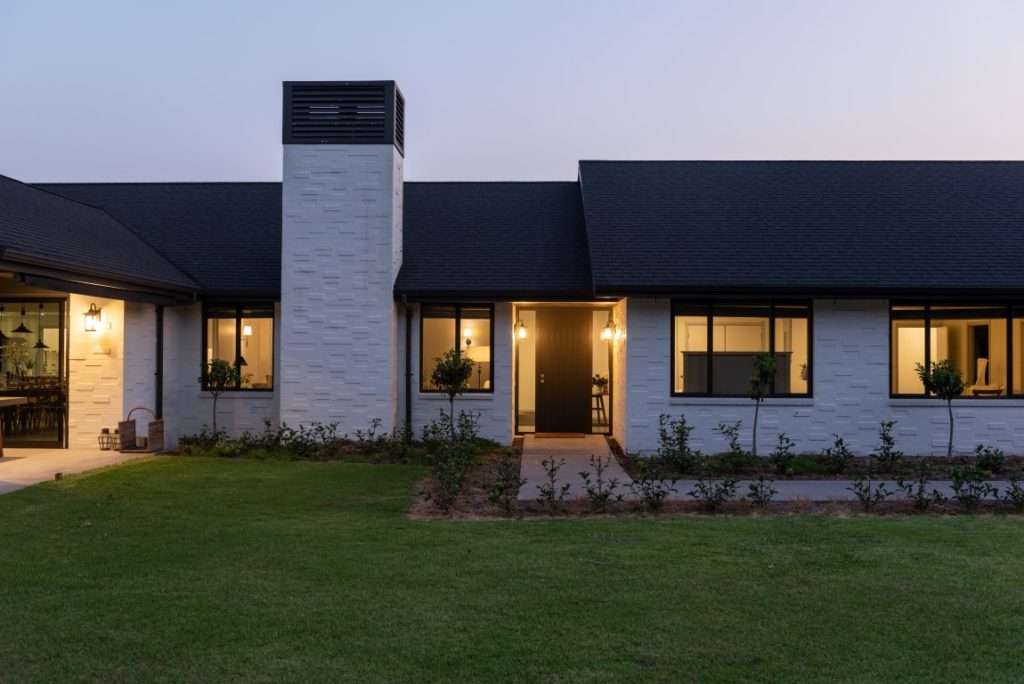
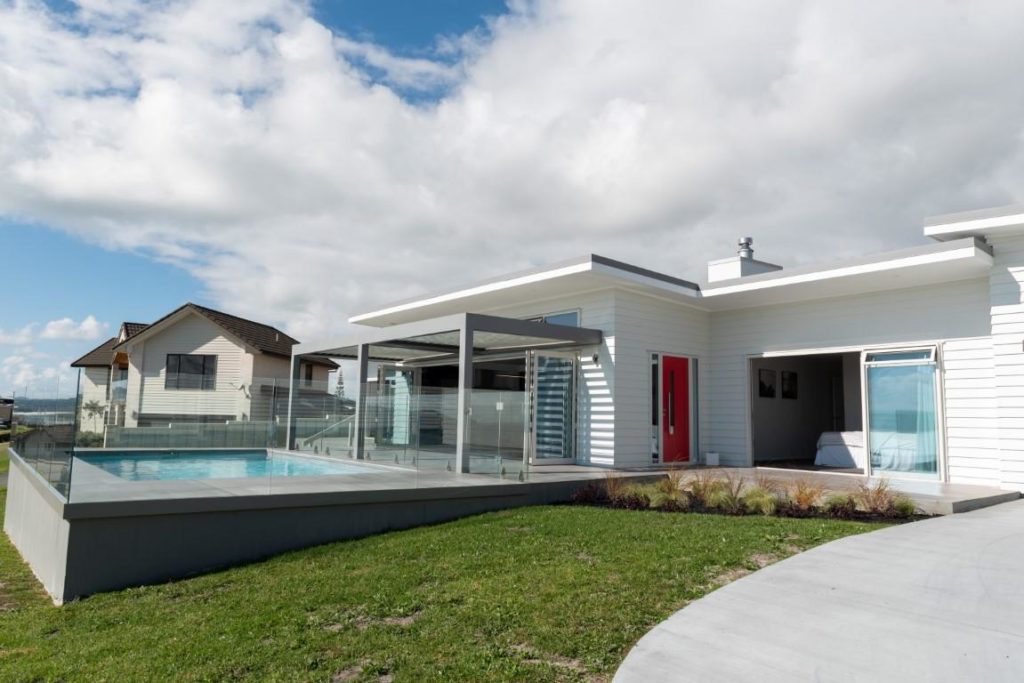
Linea or Oblique Weatherboards – Fibre Cement
It is suitable for coastal sites but will need to be repainted approximately every 10 years to retain its look and durability.
Price: $320-350/m2
Timber Weatherboards
The origins of the humble timber weatherboard date back to the 1500’s, and are still being used today. The use of more modern materials, i.e. fibre cement, have certainly slowed the use of timber weatherboards in NZ, with identical profiles being offered. However, if you want a traditional, cottage style – these are your go-to.
Timber weatherboards still require upkeep and painting, but as long as they’re painted in a lighter color to prevent the timber warping – they’re a great choice.
For more information, have a look at ITI Timspec or JSC Timber.
Pine Weatherboards Painted: $250-300/m2

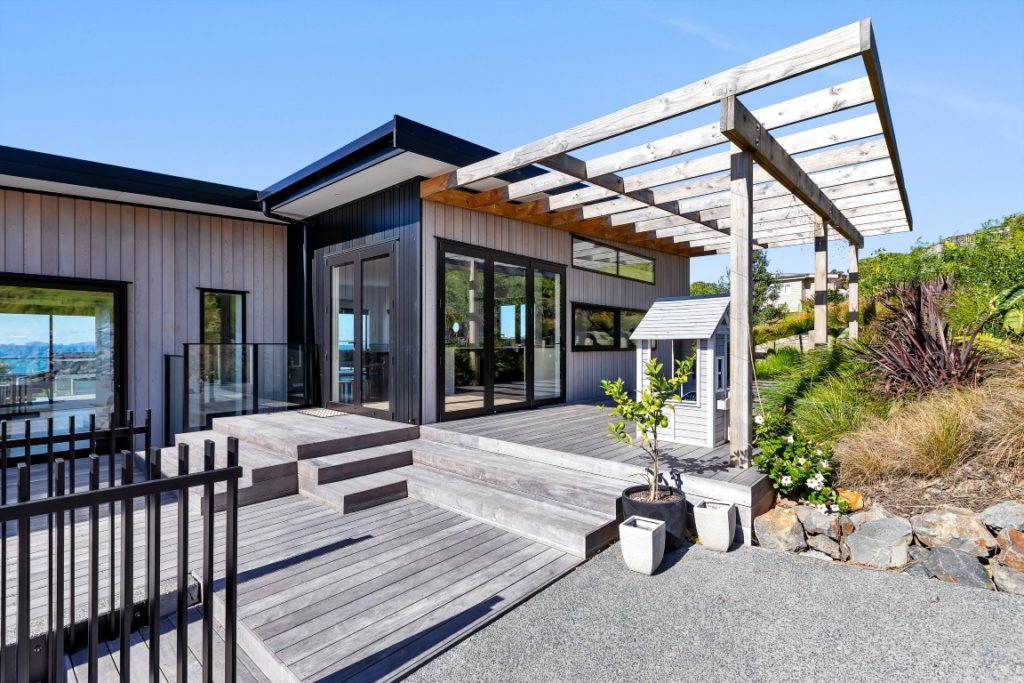
Cedar Cladding
Cedar is most commonly used in NZ as a feature cladding, often mixed with a cheaper cladding to improve the aesthetics of a design. Cedar requires regular upkeep – staining (especially of North facing walls which have constant sun) to retain the rich Cedar woodgrain.
You can get fun with cedar – from horizontal to vertical, random width, random thickness, rainscreens and feature walls.
For more information on Cedar Cladding, take a look at Hermpac or JSC Timber.
Price: $300-350/m2
Metal Cladding – Colorsteel
Often termed loosely as ‘Colorsteel cladding‘ or ‘tin cladding’, longrun cladding is manufactured from long sheets of steel, roll formed into different profiles, or shapes. More commonly used on roofing in NZ, this cladding is simple and quick to install. There’s also many variations of profile, which can be fixed horizontally or vertically. In some cases it can be reverse fixed to create a different look altogether.
Low maintenance, with durable options for coastal properties, and no painting required (it arrives factory pre-painted) this is a popular cladding choice.
For more information on Colorsteel cladding, visit Metalcraft or Dimond.
Standard Profiles: $200-230/m2
Architectural/Tray Profiles: $400+/m2
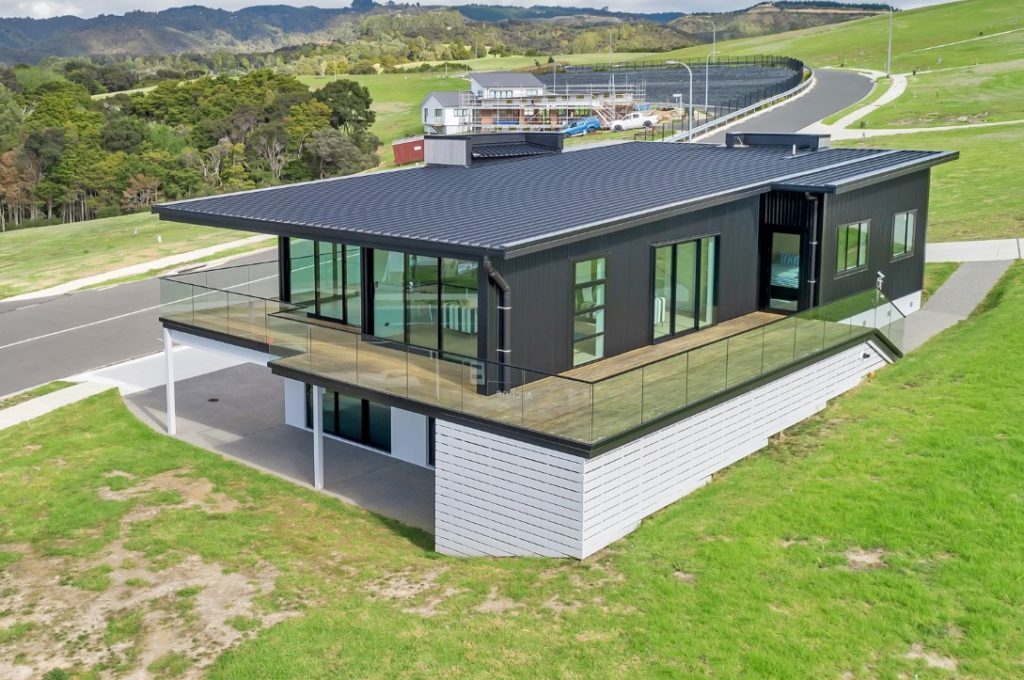

Stone Cladding or Stone Veneer
This is expensive, and for good reason. You can choose real, full stones, or a product like Craftstone, where each stone has been cut to the correct thickness to make installation easier, whilst achieving the same natural look. Either way, these have to be extracted from a quarry and are very labour intensive to lay, so the upfront cost is higher than other exterior claddings.
However, its strong, durable and requires no upkeep, so if you’ve got the budget it’ll be a worthwhile investment.
Stone on a Panel: $470/m2
Loose (Individual) Stones: $570/m2
Plaster Cladding
Plaster (otherwise known as Stucco) cladding has not always had the best name for itself, after the leaky homes saga between 1988-2004. However, since then, plaster systems have come a long way and are as watertight and more structurally sound than other cladding options.
One of the most commonly used plaster claddings is a 50mm thick AAC (Autoclaved Aerated Concrete), which is a panel screwed to a cavity on the house framing, then plastered multiple times on the outside to create various different looks and styles, depending on the plaster and the finishing technique implemented. Other options include using brick seconds to enclose the house, then plastering over top of that to achieve the same modern plastered finish.
EZ Panel 50mm Plastered & Painted $320/m2
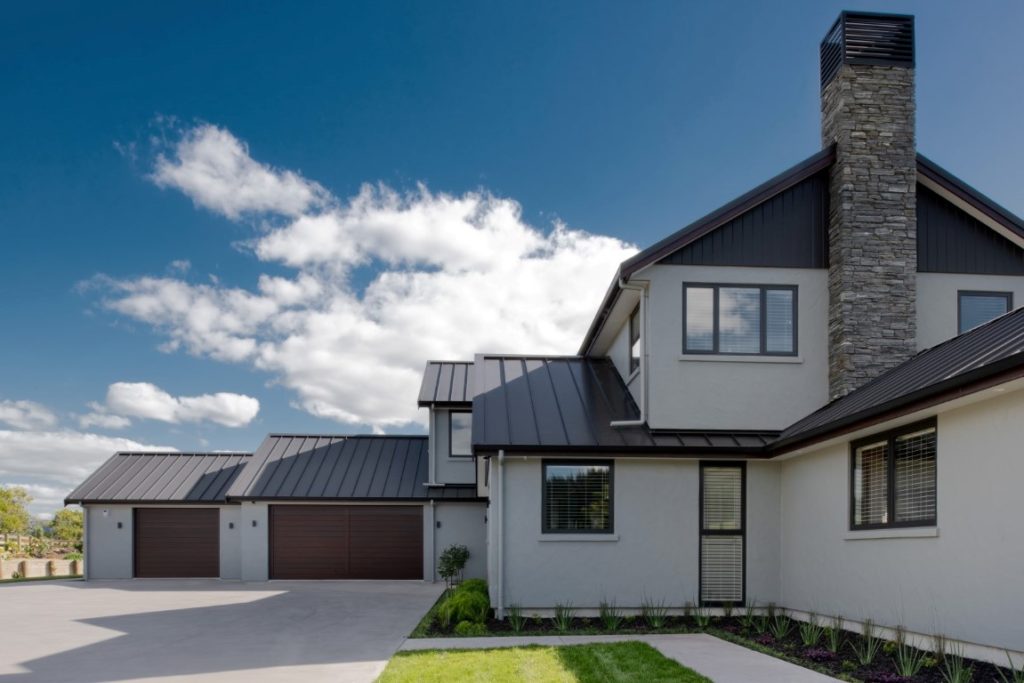

Aluminium Cladding – Nuwall/Ultraclad
Aluminium cladding is growing in popularity as more Kiwi’s want maintenance free cladding on their coastal properties. Nuwall is one of the most common brands, offering many different styles, profiles and colors of aluminium cladding to suit your build.
One of the main benefits of aluminium cladding is that it won’t rust or fade, compared to other metal, timber and fibre cement cladding options.
Price: $450-550/m2
Ply & Batten
Ply (or Board) & Batten cladding is certainly still popular with those going for the ‘country farmhouse’ style on their project. However, be careful. Many have been caught out by using products like Shadowclad as the ‘Board’ (a perfectly fine product in its own right) and painting it a dark color, and have had problems with the ply delaminating.
Our suggestion is to use fibre cement sheets, on a drained cavity, with fibre cement battens. This will give exactly the same look but allow you to paint your home a color of your choice.
Price: $250-300/m2
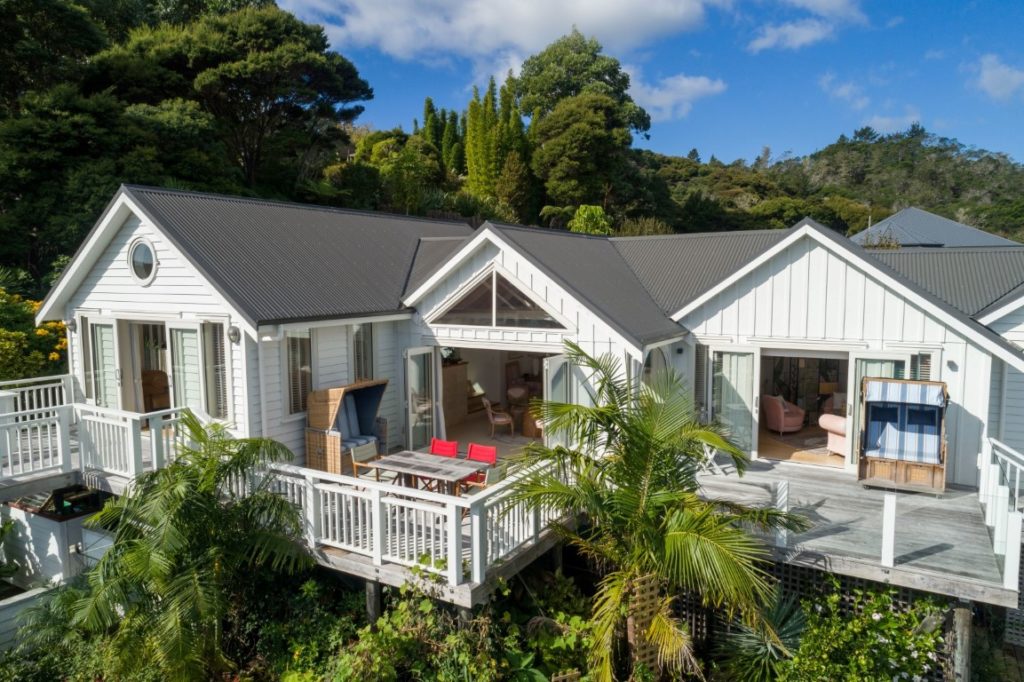
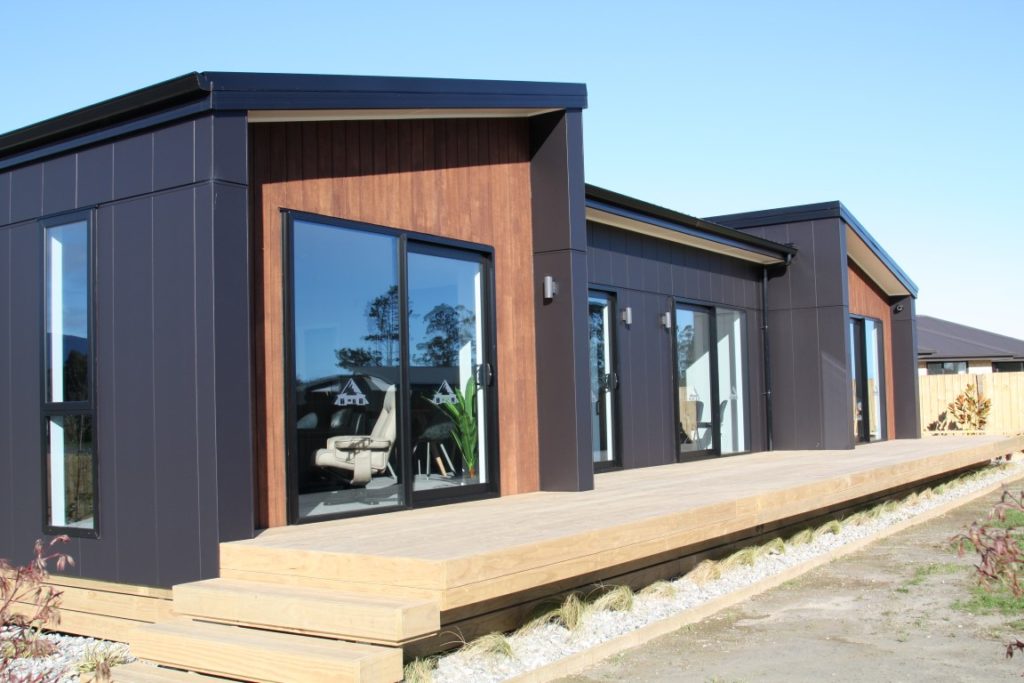
Weathertex
Weathertex cladding is an alternative to fibre cement, whilst using ground up timber as part of the material itself. Many builders have been using Weathertex as its great to handle, easy to install, and comes in a wide range of both grooved sheets and weatherboard profiles. Australian made and very durable, its a great low cost option for your next build. It also has a better than zero Carbon Footprint, and is sustainable and nontoxic.
Take a closer look at the product here – Weathertex.
Price: $220-250/m2
Palliside (Plastic) Cladding
The thought of having a plastic clad home is somewhat a ‘no-go’ zone for many homeowners. However, we’ve used Palliside cladding in some extremely harsh environments over the past 20 years and had great success.
One of the benefits is that you can’t tell its made of a plastic substrate until you’re up super close. Also, the material is one solid color, right the way through, giving it great longevity and low maintenance in harsh coastal conditions.
Price: $220-250/m2
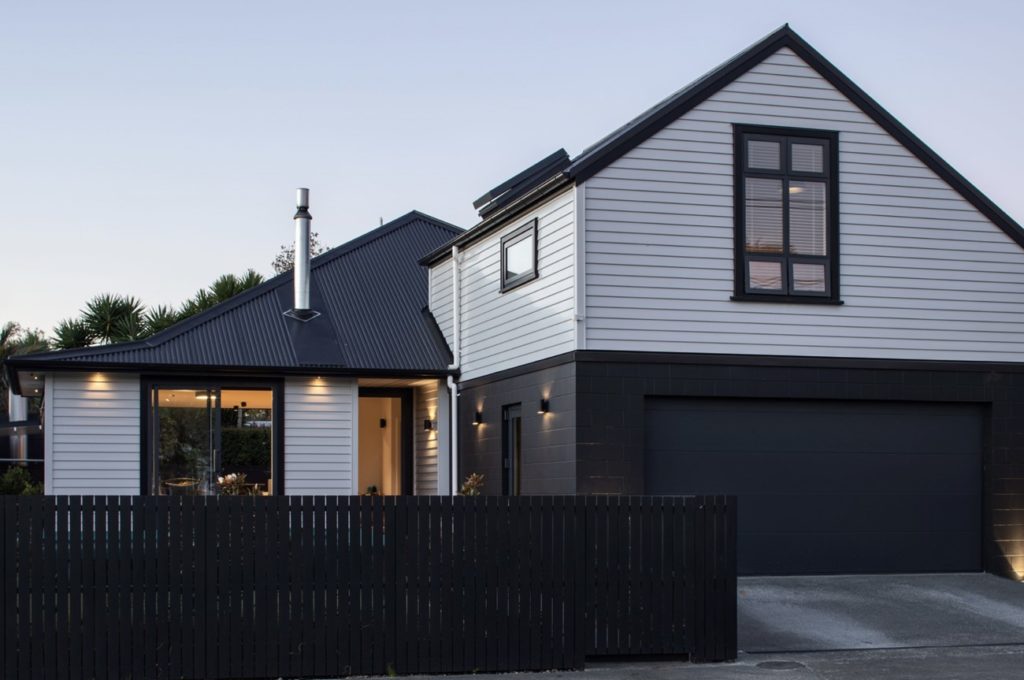
Cladding Prices per m2, from High to Low
The List Is Never Ending…
With hundreds of cladding types available in New Zealand we’ve picked what we think are the most common. As an architectural design firm we get approached weekly by new cladding suppliers offering the latest and greatest in cladding technology. We do hope this cladding types and prices guide is helpful for when you’re choosing the exterior cladding on your next home build.
Other Factors Which Affect Exterior Wall Cladding Types And Pricing
Aside from the material & labour to install & paint your cladding, factors like the wall height, joinery configuration, house location and access all play a part in the install cost of your cladding. If your site is close to the coast the fixings may need to be stainless steel, for example. Always get more than one price for your cladding supply, and generally (unless it requires a specific trade) your builder will do the install of the cladding on your project.
To Conclude: Wall Cladding Types & Prices
We recommend using a process of elimination to choose your wall cladding. Start by finding pictures of homes you like and take note of what cladding they’ve used (it will likely be more than one, so note both). Once you know the types of cladding you like, look deeper into the options around those types of cladding – shapes, forms, styles, colors. Order samples of your top 5 choices so you can see and feel the difference. Look at the manufacturers color charts to ensure you’ll get the color you want.
Remember – the cladding of your home is the most seen exterior surface. Choose wisely, otherwise it’ll be a glaring reminder every time you enter the driveway.
And of course, if you wish to find out more information about building your home, budgeting & the best process to use, get in touch with the Arcline Team.
